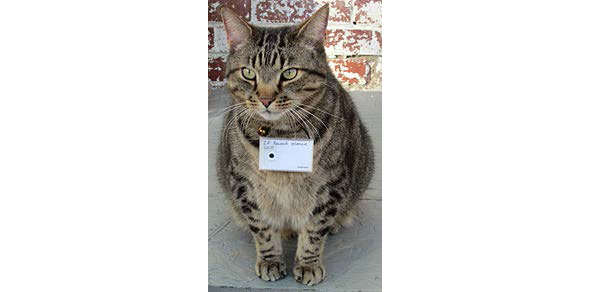Given her 15 years’ experience writing the paper’s Pet Tales column, one might expect the Pittsburgh Post-Gazette’s Linda Wilson Fuoco to know something about free-roaming cats and TNR. Or, failing that, leverage her 30+ years as a newspaper reporter and find out.
If her latest column is any indication, though, she’s simply not interested.
The Roundup
Late last month, about 35 people attended a rally in Monessen, PA, protesting the roundup of 34 free-roaming cats earlier this year. Among the cats was Chloe, a spayed pet Lorrie Cheroki had owned for 12 years.
According to Cheroki and Charlotte Luko (who lost Stripe to the trapping), co-founders of the Coalition for a Humane Monessen, the roundup came without warning. “The city circumvented state law,” notes their April 5 letter to the editor, “and gave an independently contracted, self-proclaimed ‘animal control officer’ carte blanche to trap and kill the feral cat colonies or any cat that was running ‘at large.’”
“…there had never been any attempt to locate any of the owners of the cats, that no messages were returned to anybody concerning the cats, despite days of calling, and that the shelter—at the direction of their ‘animal control officer’—abandoned its policy to hold the cats for 48 hours before killing them.”
Meanwhile, Monessen Mayor Mary Jo Smith continues to defend her actions, winning the admiration of The Wildlife Society’s CEO/Executive Director Michael Hutchins.
In any case, it seems the project’s on hold, now that the Western Pennsylvania Humane Society has stopped accepting cats from Monessen.
So, who’s responsible? According to Fuoco, the answer’s clear:
“The deaths of the Monessen cats were caused by people who claim they love cats. The blame lies with people who allow un-spayed females and un-neutered males to roam freely so that they can fight and breed and contribute to the unending supply of unwanted kittens.”
What this has to do with managed colonies of sterilized cats—and sterilized pet cats—isn’t clear at all, however.
Stranger still is Fuoco’s assertion that “people who love birds and other wildlife really hate free-ranging cats.” As Carl Sagan said rather famously, “Extraordinary claims require extraordinary evidence.” Fuoco provides none. Instead, she turns to Pete Marra:
“A study recently published in the Journal of Ornithology says such cats were the No. 1 killer ‘by a large margin’ of baby gray catbirds in three Washington, D.C., suburbs.”
Not surprisingly, Fuoco doesn’t get into any of the details—which, as I’ve pointed out repeatedly, only undermine Marra’s own extraordinary claims.
Misinformed Electorate
Of course, the more important question is not who’s to blame—or whether or not people who appreciate wildlife do indeed hate cats—but: How do we solve the problem?
According to Fuoco, 41 percent of people responding to a Post-Gazette online poll (the results of which I’ve been unable to find) prefer the “traditional” trap-and-kill approach to feral cat management (compared to 53 percent who prefer TNR).
No doubt these people believe that additional roundups are all that’s needed to eliminate the area’s feral cats—largely because they’ve never been told otherwise. Not by Marra or Hutchins, of course, but also not by Fuoco and her colleagues in the media—who, collectively, have an abysmal record where feral cats and TNR are concerned.
Would Fuoco’s readers “vote” differently if they knew that Mark Kumpf, former president of the National Animal Control Association, compared trap-and-kill to “bailing the ocean with a thimble”? Or if they knew the brutality—and expense—involved in “successful” eradication efforts, even on small, uninhabited islands?
Or if they knew that communities across the country (e.g., Peoria, AZ, Inverness, FL, etc.)—fed up with the expense and ineffectiveness of “traditional” methods—are turning to TNR.
In fact, the Volusia County (Florida) Animal Control Advisory Board recently reported that taxpayers had shelled out $2.8 million for feral cat roundups—or $87 per cat—between 2008 and 2010. With no end in sight. Hence, the board’s recommendation to adopt TNR.
Meanwhile, in Monessen, PA, city officials declined the Western Pennsylvania Humane Society’s offer to put on a TNR seminar.

